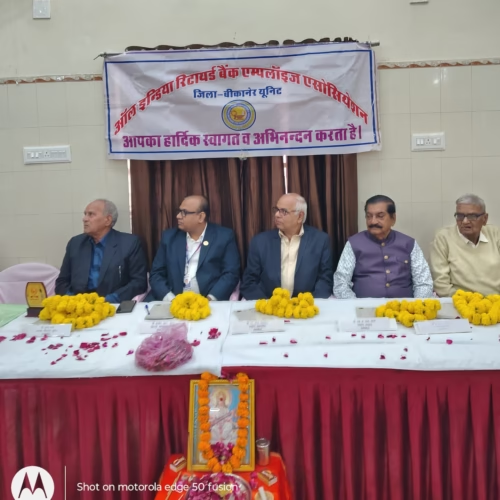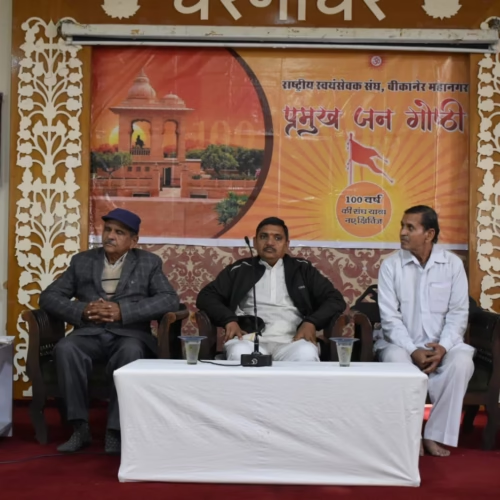BY DEFENCE JOURNALIST SAHIL | T.I.N. NETWORK
पाकिस्तान ने ‘राद-उल-फ़तह’ फायरपावर शो के नाम पर किया सैन्य छलावा: किंग अब्दुल्ला-II के सामने अपनी कमज़ोर युद्ध तैयारी छिपाने की नाकाम कोशिश
जॉर्डन के राजा की पाकिस्तान यात्रा: कूटनीति के नाम पर सैन्य प्रदर्शन की राजनीतिक बाज़ीगरी
जॉर्डन के किंग अब्दुल्ला-II की पाकिस्तान यात्रा को इस्लामाबाद ने एक ऐसे मंच में बदल दिया जहाँ देश की राजनीतिक नेतृत्व और सेना, दोनों ने मिलकर एक “रणनीतिक सफलता” की कहानी गढ़ने का प्रयास किया। पाकिस्तान की आर्थिक और सुरक्षा स्थिति पिछले कई वर्षों से गिरावट में रही है—उधर घरेलू राजनीति विभाजित, उग्रवाद फिर से सक्रिय, और IMF के सामने लगातार झुकना—इन सबके बीच पाकिस्तान को एक अंतरराष्ट्रीय चेहरा चाहिए था जो इस संकटग्रस्त माहौल में उसे किसी संबल की तरह प्रस्तुत करे। राजा अब्दुल्ला-II की यात्रा को पाकिस्तान ने उसी रूप में प्रयोग किया।
लेकिन इस यात्रा का वास्तविक स्वरूप कहीं अधिक प्रतीकात्मक था। राजा का उद्देश्य पाकिस्तान से हथियार खरीदना या कोई बड़ी सैन्य रणनीति विकसित करना नहीं था—बल्कि यह एक राजनयिक परंपरा थी जिसमें सहयोग की बातें कही जाती हैं, फोटो ली जाती हैं, औपचारिकता निभाई जाती है। पाकिस्तान ने इस राजनयिक औपचारिकता को एक बड़ी सैन्य साझेदारी के रूप में प्रचारित किया। असल में पाकिस्तान जानता था कि मध्य–पूर्व में उसकी प्रासंगिकता कम होती जा रही है, और ऐसे में किसी भी विदेशी नेता की यात्रा को “रणनीतिक जीत” की तरह पेश करना उसकी मजबूरी है। किंग अब्दुल्ला-II की मौजूदगी पाकिस्तान के लिए एक चमकदार फ्रेम थी, जिसमें वह अपने सैन्य प्रदर्शन को बहुत बड़ा बनाकर दिखाना चाहता था — लेकिन इसके पीछे की वास्तविकता बिल्कुल उलटी थी: एक कमजोर सेना, एक टूटी अर्थव्यवस्था और एक सैन्य ढांचा जो आधुनिक युद्ध के मानकों से काफी पीछे है।
GIDS की चमकदार प्रस्तुति, लेकिन भीतर से खोखली सैन्य औद्योगिक क्षमता
GIDS यानी Global Industrial and Defence Solutions को पाकिस्तान अपने सैन्य उद्योग का मुकुटमणि बताकर पेश करता है, लेकिन भीतर झांक कर देखने पर इसकी कमज़ोरियां, सीमाएं और पुरानी तकनीक की निर्भरता खुलकर सामने आ जाती है। जॉर्डन के राजा को GIDS में जिस “स्वदेशी तकनीक” को दिखाया गया, वह वास्तव में कई विदेशी प्लेटफॉर्म्स का मिश्रण है—कहीं चीनी इंजन, कहीं तुर्की के avionics, कहीं पश्चिमी सेंसरों की कॉपी। पाकिस्तान इन सबको “इंडिजिनस” कहकर पेश करता है, लेकिन यह सैन्य उद्योग असल में assembling और repairing से आगे नहीं बढ़ पाया है।
ड्रोन सिस्टम्स की बात करें तो पाकिस्तान ने शाहपर-II, उक़ाब, बुराक और कई छोटे UAVs प्रदर्शित किए, लेकिन इनमें अधिकतर या तो चीनी तकनीक पर आधारित हैं, या वास्तविक युद्ध में पहले से कमजोर साबित हुए हैं। पाकिस्तान ने इन्हें जॉर्डन को दिखाते हुए दावा किया कि ये multi-role, multi-domain और high-precision systems हैं — जबकि वास्तविकता यह है कि इनकी endurance कम है, payload सीमित है, और target tracking में स्थिरता की कमी है।
GIDS के आर्टिलरी सिस्टम्स भी पाकिस्तान की मजबूरी को दर्शाते हैं। जिन MLRS और guided rockets का प्रदर्शन किया गया, उनमें कई चीनी रॉकेट इंजनों के संशोधित संस्करण थे। न तो पाकिस्तान के पास real-time targeting systems हैं और न ही ISR architecture जो ऐसे हथियारों को आधुनिक युद्ध में प्रभावी बना सके। मगर पाकिस्तान ने इन्हें बड़े धूमधाम से पेश किया — क्योंकि यह पूरी प्रस्तुति असल में एक शो था, ताकत का नहीं, बल्कि छवि का।
फील्ड मार्शल आसिम मुनीर का राजनयिक प्रदर्शन, सैन्य हकीकत से दूर
फील्ड मार्शल आसिम मुनीर ने जब किंग अब्दुल्ला-II को GIDS और तिल्ला रेंज का दौरा करवाया, तो पूरा कार्यक्रम एक “रिहर्सल की गई स्क्रिप्ट” की तरह लग रहा था। उनके भाषणों में modern warfare, threat spectrum, deterrence matrix और interoperability जैसे शब्द बार-बार उपयोग किए गए — लेकिन यह सब शब्दावली पाकिस्तान के ग्राउंड रियलिटी से मेल नहीं खाती। पाकिस्तानी सेना की विशाल फॉर्मेशनों के पास आधुनिक संचार साधनों की कमी है, उनके हथियार कई दशकों पुराने हैं, और सबसे बड़ी बात — पाकिस्तान की सैन्य तैयारी में sustainability का बड़ा अभाव है।
आसिम मुनीर की सबसे बड़ी चुनौती यह है कि वह ऐसी सेना के मुखिया हैं जिसका मनोबल निरंतर गिरा है, क्योंकि उसकी क्षमताएँ उसके पड़ोसी भारत की तुलना में कई पीढ़ियों पीछे हैं। भारत ने जहां network-centric warfare में छलांग लगा ली है, वहीं पाकिस्तान अभी भी अपनी पारंपरिक formation-centric रणनीति से आगे नहीं बढ़ पाया है। पाकिस्तान अपनी कमज़ोरियों को diplomatic optics के पीछे छिपा लेता है और जिसे दुनिया “strategic demonstration” नहीं, बल्कि “strategic overcompensation” कहती है — वही आसिम मुनीर ने इस दौरे के दौरान कोशिश की।
जॉर्डन–पाकिस्तान सैन्य संबंधों का पुराना गठजोड़ और वर्तमान की उलझनें
पाकिस्तान और जॉर्डन के बीच रक्षा सहयोग की नींव दशकों पुरानी है, जब पाकिस्तान ने जॉर्डन को पायलट, प्रशिक्षक और इंटेलिजेंस विशेषज्ञ उपलब्ध करवाए थे। 1967 और 1970 के दशक में पाकिस्तान की भूमिका जॉर्डन में अहम थी। लेकिन यह इतिहास वर्तमान वास्तविकताओं को छिपा नहीं सकता। आज जॉर्डन की सैन्य संरचना अमेरिकी, ब्रिटिश और यूरोपीय तकनीक पर आधारित है, जबकि पाकिस्तान का ढांचा चीनी, तुर्की और पुराने अमेरिकी सिस्टम्स का मिश्रण है।
जॉर्डन एक ऐसा देश है जो NATO स्टैंडर्ड्स को फॉलो करता है, जबकि पाकिस्तान का पूरा सैन्य ढांचा चीनी कमांड–कंट्रोल सिस्टम्स पर निर्भर होता जा रहा है। इस अंतर के कारण वास्तविक सैन्य सहयोग सीमित हो जाता है। फिर भी पाकिस्तान जॉर्डन और तुर्की को यह विश्वास दिलाना चाहता है कि वह एक “रणनीतिक दोस्त” है, जबकि जॉर्डन के लिए यह यात्रा अधिकतर फोटो-ऑप और डिप्लोमैटिक शिष्टाचार भर थी।
टिल्ला रेंज में पाकिस्तान का ‘Raad-ul-Fatah’ शक्ति प्रदर्शन: खोखले सैन्य ढांचे को चमकाने की नाकाम कोशिश
टिल्ला फील्ड फायरिंग रेंज में पाकिस्तान का ‘Raad-ul-Fatah’ सैन्य अभ्यास पहली नज़र में बड़ा, भव्य और प्रभावशाली दिखने के लिए डिज़ाइन किया गया था, लेकिन असलियत इससे बिल्कुल अलग थी। जॉर्डन के किंग अब्दुल्ला-II, अज़रबैजान के डिफेंस इंडस्ट्री के मंत्री और विदेशी सैन्य प्रतिनिधिमंडलों की मौजूदगी ने पाकिस्तान को वही पुराना मौका दिया, जब वह अपने कमजोर सैन्य ढांचे को रंगीन मौकों, धुएं, मिसाइल लॉन्च साउंड, ड्रोन फ्लाईओवर और ग्राउंड–एयर शूट का थोड़ा-बहुत प्रदर्शन करके उभार सके। मुकाबले की असल क्षमता पर पाकिस्तान बात नहीं कर सकता, इसलिए उसने अपनी पारंपरिक रणनीति अपनाई — विदेशी मेहमानों को ‘सैन्य शो’ दिखाओ और देश में चल रही कमज़ोरियों, सैन्य करप्शन, फेल्ड प्रोजेक्ट्स और टूटी इकोनॉमी को ढक दो। टिल्ला रेंज, जो खुद पाकिस्तान की सबसे सीमित और तकनीकी रूप से पिछड़ी ट्रेनिंग साइट्स में गिनी जाती है, वहां अचानक हाई-टेक, मल्टी-डोमेन ऑपरेशन की एक्टिंग करने की कोशिश साफ दिख रही थी, क्योंकि पाकिस्तान के पास असल में वो क्षमता नहीं है जिसे वह दुनिया को दिखाना चाहता है।
ग्राउंड–एयर ऑपरेशंस की ‘डेमो वर्ज़न’— पाकिस्तान की असली कमी उजागर कर गया
अभ्यास में दिखाए गए ग्राउंड–एयर ऑपरेशंस तकनीकी स्तर पर केवल डेमो-ग्रेड थे, जहां सैनिकों और एयरक्रू को पहले से कोरियोग्राफ्ड रूटीन फॉलो करने को कहा गया था। पाकिस्तान की वायुसेना और सेना के बीच समन्वय की कमी दुनिया जानती है, और इस अभ्यास की ड्रेस-रिहर्सल जैसी हरकतें इस कमजोरी को छुपा नहीं सकीं। पाकिस्तानी मीडिया इसे ‘ज्वाइंट थियेटर पावर’ कहकर बेचने की कोशिश करता रहा, लेकिन इसके पीछे वो खामोश सच छिपा था कि असल जंग में पाकिस्तान की एयर–ग्राउंड सिंक्रोनाइज़ेशन बार-बार फेल हुई है — कारगिल से लेकर ऑपरेशन रद्द-उल-फसाद तक। उनका मल्टी-डोमेन एक्शन सिर्फ़ कैमरे और मेहमानों के सामने चलता है, न कि युद्धक्षेत्र में।
स्पेक्ट्रम वॉरफेयर की गलतफहमियाँ — पाकिस्तान अभी भी एनालॉग लड़ाई लड़ रहा है
अभ्यास के दौरान पाकिस्तान ने अपने EW (Electronic Warfare) और Spectrum Warfare की क्षमताओं का दावा किया, लेकिन यह दावा सिर्फ दावा ही था। पाकिस्तान के पास आधुनिक EW प्लेटफॉर्म्स न के बराबर हैं, और जो हैं वे चीन की पुरानी तकनीक पर आधारित हैं। दुनिया के सामने यह दिखाना कि वे ‘स्पेक्ट्रम डॉमिनेशन’ कर सकते हैं, पूरी तरह एक राजनीतिक स्टंट था। टिल्ला रेंज की सीमित तकनीकी संरचना और पुराने कम्युनिकेशन इंटरसेप्टर्स यह साबित करते हैं कि पाकिस्तान अभी भी एनालॉग-युग के युद्ध ढांचे से बाहर नहीं निकला है। चीन से मिली तकनीक पर निर्भर सेना खुद हमले की स्थिति में सबसे पहले उसी स्पेक्ट्रम ब्लाइंडनेस का शिकार होती है, जिसका उसने इस अभ्यास में विरोधियों को शिकार बनाते दिखाया।
ड्रोन मैन्युवर शो— पाकिस्तान की ‘लो-कॉस्ट हाई-पबलिसिटी’ स्ट्रैटेजी का हिस्सा
अभ्यास में सबसे ज्यादा हाइप ड्रोन ऑपरेशंस को लेकर बनाई गई, लेकिन पाकिस्तान के ड्रोन्स को देखकर साफ दिखाई दे रहा था कि यह सब एक ‘लो-कॉस्ट हाई-पब्लिसिटी’ मॉडल पर आधारित था। तुर्की के बाद पाकिस्तान ने चीन से सस्ते MALE/HALE ड्रोन्स लिए और कुछ खुद के बनाए क्वाडकॉप्टर उड़ा दिए, ताकि दुनिया को यह लगे कि वह हाइब्रिड वारफेयर में सक्षम है। असलियत यह है कि पाकिस्तान के ड्रोन्स बार-बार क्रैश रिकॉर्ड करते हैं, उनकी रेंज वास्तविक युद्ध में आधी हो जाती है, और कम्युनिकेशन जामिंग के सामने ये पूरी तरह बेकार हो जाते हैं। लेकिन विदेशी मेहमान हों तो पाकिस्तान को बस यही चाहिए — धुआं, आवाज़ और उड़ते हुए खिलौने।
1 कोर मंगला की तैनाती: पाकिस्तान की आक्रामक छवि गढ़ने की कोशिश
पाकिस्तान की सबसे बड़ी स्ट्राइक फॉर्मेशन 1 कोर मंगला को इस अभ्यास में आगे रखकर यह दिखाने की कोशिश की गई कि पाकिस्तान किसी बड़े परंपरागत युद्ध के लिए तैयार है। लेकिन पाकिस्तान जिस “स्ट्राइक कोर” का विज्ञापन करता है, उसकी असल स्थिति बेहद उलझी, बोझिल और संसाधन-विहीन है। 1 कोर की अधिकांश लड़ाकू इकाइयाँ पुराने कम्युनिकेशन नेटवर्क पर चलती हैं, जिनमें ना ही आधुनिक फाइबर-मैप्ड कमांड सिस्टम है और ना ही डिजिटल इंफॉर्मेशन-फ़्यूज़न प्लेटफ़ॉर्म। कई टैंकों और बख्तरबंद वाहनों की मरम्मत महीनों तक लंबित रहती है, और अभ्यास में दिखाई गई इकाइयाँ वे थीं जिन्हें महज़ दिखावे के लिए चुनकर पहले से मेंटेन कराया गया था।
लॉजिस्टिक सपोर्ट पाकिस्तान सेना की हमेशा से कमज़ोर कड़ी रही है—ईंधन की आपूर्ति से लेकर गोला-बारूद तक, 1 कोर की वास्तविक तैयारियों में लगातार खामियाँ सामने आती रही हैं। पाकिस्तान ने विदेशी मेहमानों, विशेषकर जॉर्डन और अज़रबैजान के प्रतिनिधियों के सामने यह भ्रम पैदा किया कि उसकी स्ट्राइक कोर “फुल स्पेक्ट्रम ऑपरेशन” करने में सक्षम है, लेकिन इसकी सप्लाई चेन, निरीक्षण प्रक्रिया और मनोबल लगातार घटते बजट और राजनैतिक हस्तक्षेपों से प्रभावित रहा है। पाकिस्तान की सेना ने एक आक्रामक दिखावा अवश्य किया, पर उसकी जमीनी सच्चाई कहीं अधिक जटिल और खोखली है।
17 इन्फैंट्री डिवीजन खारियन: पाकिस्तान की इन्फैंट्री का संघर्ष और वास्तविक चुनौतियाँ
17 इन्फैंट्री डिवीजन को इस तरह प्रदर्शित किया गया जैसे यह एक उच्च-तैयार, high-mobility formation है। लेकिन खारियन की इस डिवीजन की असली चुनौतियाँ उसके अभ्यास प्रदर्शन से उलटी हैं। पाकिस्तान की इन्फैंट्री अभी भी उसी पुराने पारंपरिक पैदल सेना ढांचे पर चलती है, जो न तो आधुनिक “sensor-to-shooter” तंत्र से जुड़ा है, न ही नाइट-वारफेयर से सक्षम। पाकिस्तान के पास समुचित थर्मल इमेजर्स, नाइट विज़न गॉगल्स, सेंसर फ्यूज़न गियर और मल्टी-लेयर्ड कम्युनिकेशन सिस्टम नहीं हैं, जिससे इसकी इन्फैंट्री वास्तविक समय में battlefield awareness हासिल कर सके।
खारियन क्षेत्र की इस डिवीजन ने टिल्ला अभ्यास में अपने सैनिकों को जिस तेजी से manoeuvre करते दिखाया, वह केवल कैमरा-फ्रेंडली मूवमेंट थी—जमीन पर इन सैनिकों को कई बार IED, ड्रोन स्ट्राइक और एंबुश स्थितियों में भारी नुकसान उठाना पड़ा है। इस डिवीजन का वास्तविक प्रशिक्षण सिलसिला आतंकवाद विरोधी अभियानों में उलझकर कमजोर पड़ा है, जिससे पारंपरिक युद्ध की तैयारी पीछे धकेल दी गई है। पाकिस्तान ने जिस कौशल का दावा किया, वह केवल बाहरी चमक थी—वास्तविक चुनौतियाँ इससे कहीं अधिक गहरी और त्रुटिपूर्ण हैं।
6 आर्मर्ड डिवीजन गुजरांवाला: पुराने टैंकों के सहारे आधुनिक युद्ध का दिखावा
टिल्ला रेंज पर 6 आर्मर्ड डिवीजन को पाकिस्तान ने ऐसे प्रस्तुत किया जैसे यह उसका आधुनिक armoured fist है, पर इस गठन की रीढ़ जिन टैंकों पर टिकी है, वह T-59 और T-85 जैसे अत्यंत पुराने, थके-हारे और तकनीकी रूप से पिछड़े मॉडल हैं। पाकिस्तान का दावा है कि उसने इन टैंकों में “मॉडर्नाइजेशन पैकेज” जोड़ा है, लेकिन इसकी वास्तविक क्षमता सीमित है—इनमें डिजिटल फायर कंट्रोल सिस्टम की कमी है, armour protection अपर्याप्त है, और mobility आधुनिक युद्धक परिस्थितियों में धीमी है।
भारत के मुकाबले पाकिस्तान के इन टैंकों के पास active protection systems, real-time battle networking, high-resolution thermal sights और AI-सक्षम optical trackers की भारी कमी है। पाकिस्तान ने अभ्यास में धुआँ, तेज़ फायरिंग और विस्फोटों के सहारे अपने पुराने टैंकों को “आधुनिक युद्धक मशीनों” की तरह खिलवाड़ कर दिखाया, लेकिन जमीन पर यह प्लेटफ़ॉर्म किसी भी तेज़, घातक, मशीन-युग युद्ध में बहुत पीछे छूट जाते हैं।
आर्मी एविएशन कोर: चीनी Z-10 और अमेरिकी AH-1F का असंगत मेल
पाकिस्तान की आर्मी एविएशन कोर दुनिया की सबसे विचित्र मिक्स्ड फ्लैट संरचनाओं में से एक है—एक तरफ पुराने अमेरिकी AH-1F Cobra हेलिकॉप्टर, दूसरी तरफ चीन के प्रयोगात्मक और सीमित-क्षमता वाले Z-10ME-II। इन दोनों प्लेटफॉर्म की maintenance philosophy, avionics architecture, engine reliability cycle और weapons integration पूरी तरह अलग हैं, जिससे एक संगठित attack helicopter doctrine बन ही नहीं पाता। पाकिस्तान ने इसे “दो युगों की संगति” कहा, जबकि वास्तविकता यह है कि पाकिस्तान के पास विकल्पों की कमी थी, और वह मजबूरी में दो असंगत सिस्टमों को साथ चला रहा है।
अभ्यास में भले ही formation flying और integrated fire manoeuvre दिखाए गए हों, लेकिन आर्मी एविएशन की वास्तविक कमजोरी यह है कि इसके पास ना unified communication चैनल हैं, ना standardized targeting systems। पाकिस्तान इस मिश्रित fleet को अपने “multi-domain attack capability” का प्रमाण बताता है, लेकिन असलियत यह है कि यह capability टूटे हुए सिस्टम और असमान training structure पर टिकी है।
Z-10ME-II का प्रदर्शन: चीन के प्रभाव का बढ़ता दबदबा, पर मारक क्षमता सीमित
टिल्ला में Z-10ME-II हेलिकॉप्टर को पाकिस्तान ने पूरे आत्मविश्वास से प्रदर्शित किया, क्योंकि यह चीन का पाकिस्तान को दिया गया प्रमुख अटैक हेलिकॉप्टर है। लेकिन इस हेलिकॉप्टर की वास्तविक combat capability अभी भी विवादों से घिरी है। इसके इंजन under-powered माने जाते हैं—उच्च तापमान और हाई-डस्ट वातावरण में इसका प्रदर्शन गिरता है। भारतीय अपाचे हेलिकॉप्टर की तरह यह हेलिकॉप्टर भारी armour penetration क्षमता नहीं रखता और न ही इसके targeting sensors उतने refined हैं।
चीन ने पाकिस्तान को इस हेलिकॉप्टर के “advanced defensive suites” की कहानी बेची है, लेकिन युद्ध में इसकी वास्तविक survivability भारत के Longbow Apache के मुकाबले काफी कम मानी जाती है। अभ्यास में यह जरूर सुर्खियों में रहा, लेकिन यह पाकिस्तान के रक्षा क्षेत्र में चीन की बढ़ती पकड़ और पाकिस्तान की निर्भरता का भी प्रतीक था।
AH-1F कोबरा: पुरानी तकनीक का सहारा और सैन्य बेड़े में मजबूरी का टिकाव
AH-1F कोबरा पाकिस्तान की सैनिक विरासत का हिस्सा जरूर है, लेकिन आज की युद्ध आवश्यकताओं के हिसाब से यह प्लेटफॉर्म पुराना, सीमित और जोखिमभरा माना जाता है। पाकिस्तान ने इसे अभ्यास में महज़ इसलिए शामिल किया ताकि उसकी एविएशन कोर “मल्टी-जनरेशनल” दिखाई दे। लेकिन वास्तविकता यह है कि AH-1F की night-fighting क्षमता बेहद कमज़ोर है, इसका armour छोटे हथियारों के सामने भी कमजोर है, और इसकी आग बरसाने की क्षमता आधुनिक हेलिकॉप्टरों जितनी घातक नहीं है।
फिर भी पाकिस्तान इसे “हेरीटेज स्ट्रेंथ” कहकर पेश करता है, लेकिन विशेषज्ञों के लिए यह साफ संकेत है कि पाकिस्तान के पास आधुनिक हेलिकॉप्टर fleet की कमी अभी भी गंभीर है।
ड्रोन और इलेक्ट्रॉनिक वारफेयर सिस्टम: पाकिस्तान का आधा-अधूरा तकनीकी परिवर्तन और मिसगाइडेड प्रोजेक्शन
राद-उल-फ़तह के दौरान पाकिस्तान ने ड्रोन-वारफेयर को अपनी नई सैन्य क्रांति के रूप में पेश करने में कोई कसर नहीं छोड़ी। वीडियो, आधिकारिक बयान और फ्रंटलाइन फुटेज के सहारे यह दिखाने की कोशिश की गई कि पाकिस्तान ने FPV ड्रोन, surveillance platforms, loitering munitions और UCAV integration में बड़ी छलांग लगा ली है। लेकिन पाकिस्तान की वास्तविक क्षमता इस दिखावे से कहीं अधिक सीमित है। अभ्यास के दौरान पाकिस्तान ने जो FPV स्वार्म या tactical drone movements दिखाए, वह अधिकतर rehearsed sequences पर आधारित थे, जिनमें पहले से तय किये गए target points, safe flying corridors और pre-scripted engagements शामिल थे। वास्तविक युद्धक्षेत्र में इन सिस्टम्स का संचालन sophisticated counter-drone systems, jammer grids और AI-based anti-FPV nets के सामने लगभग निष्प्रभावी हो जाता है — और यही वह क्षेत्र है जिसमें भारत स्पष्ट रूप से पाकिस्तान पर कई पीढ़ियाँ आगे है।
पाकिस्तान ने इलेक्ट्रॉनिक वारफेयर सिस्टम्स को भी अपनी ‘future-ready’ छवि के रूप में पेश किया, लेकिन EW की उसकी backbone आज भी outdated Soviet-era principles पर आधारित है। पाकिस्तान के पास modern DRFM jammers, real-time electronic support measures, spectrum dominance tools और integrated electronic attack platforms की अत्यधिक कमी है। अभ्यास के दौरान EW की जो झलक दिखाई गई वह केवल सीमित interference trials और basic spoofing demonstrations थे, जिन्हें Pakistan ने बड़े-बड़े शब्दों में ‘spectrum warfare’ कहकर प्रचारित किया। असल सच्चाई यह थी कि Pakistan की EW capability अभी भी fragmented है, और उसके पास unified battlefield-wide electronic architecture नहीं है — जबकि भारत अपने integrated EW clusters, swarm-resistant electronic corridors, और AI-supported threat analysis से कहीं आगे निकल चुका है।
रॉकेट और आर्टिलरी फायर: पाकिस्तान का पारंपरिक हथियारों पर कायम रहना और कमजोर लक्ष्य-सटीकता
राद-उल-फ़तह की सबसे शोरगुल वाली गतिविधियाँ आर्टिलरी और रॉकेट सिस्टम फायरिंग की थीं, जिन्हें पाकिस्तान हमेशा से अपनी firepower realism का मुख्य स्तंभ दिखाता है। MLRS सिस्टम्स, heavy artillery pieces और long-range rockets की तेज़, लगातार फायरिंग को व्हाइट-स्मोक, slow-motion footage और dramatic background commentary के साथ प्रस्तुत किया गया। यह देखने वालों के लिए प्रभावशाली जरूर लगा, लेकिन वास्तविक battlefield effectiveness की दृष्टि से इन प्रदर्शन का भारत जैसे प्रतिद्वंद्वी पर कोई रणनीतिक प्रभाव नहीं पड़ता।
पाकिस्तान की artillery modernization अभी भी बेहद पीछे है। उसके पास battlefield surveillance radars की कमी है, target acquisition systems पुराने हैं और modern artillery fire control computers बेहद सीमित मात्रा में उपलब्ध हैं। अभ्यास के दौरान पाकिस्तान अपनी accuracy को highlight नहीं कर पाया क्योंकि उसकी majority fire missions अभी भी manual calculations और outdated ballistic tables पर आधारित हैं।
इसके विपरीत भारत अपनी artillery को स्वदेशी ATAGS, M777, Dhanush, high-precision rocket systems और sensor-fusion आधारित targeting से जोड़ चुका है, जहाँ target data drones, satellites, counter-battery radars और AI-supported fire-control से एक unified ecosystem में आता है। पाकिस्तान इस स्तर की precision, automation और real-time targeting से अभी बहुत दूर खड़ा है।
अज़रबैजान और जॉर्डन की मौजूदगी: पाकिस्तान का रणनीतिक संदेश, लेकिन वास्तविक प्रभाव सीमित
अज़रबैजान और जॉर्डन के प्रतिनिधिमंडलों की मौजूदगी पाकिस्तान ने इस अभ्यास का “सबसे बड़ा कूटनीतिक आकर्षण” बताने की कोशिश की। पाकिस्तान का उद्देश्य स्पष्ट था: वह दुनिया को यह दिखाना चाहता था कि उसकी सैन्य कूटनीति मजबूत हो रही है और उसके युद्धक प्रदर्शन को कई देशों का समर्थन प्राप्त है। लेकिन यह कहानी जितनी पाकिस्तान ने चमकाई, उतने ही ज्यादा दरारें वास्तविक विश्लेषण में दिखाई देती हैं।
अज़रबैजान अपने ड्रोन-प्रधान युद्ध मॉडल के कारण दुनिया में प्रसिद्ध है, लेकिन उसकी प्राथमिकता तुर्की और इज़राइल की टेक्नोलॉजी है, न कि पाकिस्तान की सीमित क्षमताएँ। इसी तरह जॉर्डन की सेना का modernization roadmap अमेरिका और ब्रिटेन के कॉम्बैट सिद्धांतों से संचालित है — पाकिस्तान केवल एक symbolic partner है, न कि कोई operational model। दोनों देशों की उपस्थिति महज कूटनीतिक शिष्टाचार थी, जिसे पाकिस्तान ने “सैन्य समर्थन” के रूप में प्रोजेक्ट किया, जबकि ground reality में इन देशों के लिए Pakistan Army की तकनीकी भूमिका सीमित है।
किंग अब्दुल्ला-II द्वारा आसिम मुनीर को सैन्य सम्मान: राजनीति की चमक, सैन्य मूल्य का अभाव
जॉर्डन के किंग अब्दुल्ला-II द्वारा पाकिस्तान के आर्मी चीफ जनरल आसिम मुनीर को दिया गया सैन्य सम्मान पाकिस्तान ने एक बड़ी “मिलिट्री अचीवमेंट” की तरह पेश किया। टीवी स्टूडियो, प्रेस नोट्स, सरकारी विज्ञप्तियाँ और सोशल मीडिया पर इसे “महान सम्मान” के रूप में amplify किया गया। लेकिन रक्षा विशेषज्ञों के मुताबिक यह सम्मान अधिकतर कूटनीतिक और राजनीतिक प्रकृति का था — रिश्तों को मजबूत करने के लिए दिए जाने वाले formal honours में से एक।
इस सम्मान का Pakistan की युद्धक क्षमता या सीख पर कोई प्रत्यक्ष प्रभाव नहीं पड़ता। पाकिस्तान ने इसे अपनी सैन्य प्रतिष्ठा की ऊँचाई दिखाने के लिए इस्तेमाल किया, जबकि असलियत यह थी कि जॉर्डन और पाकिस्तान के रक्षा संबंध पूरी तरह symbolic और routine-level cooperation पर आधारित हैं।
भारत के लिए रणनीतिक संकेत: पाकिस्तान का बड़ा शो, लेकिन असर बेहद सीमित
राद-उल-फ़तह अभ्यास भारत के लिए किसी भी तरह की रणनीतिक चिंता का कारण नहीं बना, क्योंकि Pakistan Army की वास्तविक क्षमताएँ अभी भी पुराने प्लेटफॉर्म्स, सीमित तकनीक, कमजोर EW architecture, outdated tanks, और mismatched aviation fleet पर टिकी हैं। भारत की modernisation गति अधिक तेज़, वैज्ञानिक और doctrine-driven है। भारत के पास अपनी सामरिक श्रेष्ठता का पूरा सिस्टम मौजूद है — integrated battle groups, AI-driven ISR network, Apache और LCH platforms, Pinaka और ATAGS जैसी आधुनिक फायरपावर, और व्यापक electronic spectrum dominance।
इस अभ्यास से भारत को सिर्फ़ यह संकेत मिला कि पाकिस्तान अपनी पुरानी सीमाओं को cosmetic presentation से ढकने की कोशिश कर रहा है। वास्तविक लड़ाकू क्षमता, logistics sustainability, network-centric warfare और long-range precision की उसकी कमियाँ पहले जैसी ही बनी हुई हैं।
राद-उल-फ़तह का वास्तविक निष्कर्ष: पाकिस्तान की प्रदर्शनी-शैली सैन्य बाज़ीगरी
कुल मिलाकर, राद-उल-फ़तह अभ्यास पाकिस्तान के लिए एक showcase platform था — एक carefully scripted war-theatre जिसे पाकिस्तान ने अपनी सैन्य विश्वसनीयता बढ़ाने के प्रयास में मंचित किया। लेकिन यह कार्यक्रम पाकिस्तान की अंदरूनी तकनीकी, आर्थिक और रणनीतिक चुनौतियों को छिपा नहीं सका। आधुनिक युद्ध के अधिकांश मापदंडों पर Pakistan अभी भी पीछे है।
यह अभ्यास अधिकतर राजनीतिक optics और domestic morale boosting के लिए था। पाकिस्तान ने दुनिया को यह दिखाने की कोशिश की कि वह तेजी से बदल रहे युद्ध-सिद्धांतों में खुद को ढाल रहा है, जबकि वास्तविकता यह है कि उसका defence infrastructure resource constraints, obsolete technology और doctrinal inconsistencies से घिरा हुआ है।
BY DEFENCE JOURNALIST SAHIL | T.I.N. NETWORK
Jordan’s King Abdullah II Witnesses Pakistan’s Raad-ul-Fatah Firepower Display at Tilla Ranges Amid Strategic Push Involving 1 Corps Mangla, 17 Infantry Division Kharian, Army Aviation Corps and 6 Armoured Division Gujranwala
A High-Voltage Visit That Signalled Renewed Pakistan–Jordan Defence Convergence
Jordan’s King Abdullah II’s arrival in Pakistan marked one of Islamabad’s most strategically choreographed diplomatic–military engagements of the year. His visit was not confined to ceremonial optics but extended deep into Pakistan’s defence industrial architecture, battlefield doctrines, and live multi-domain operational capabilities. Accompanied by Princess Salma and a heavyweight delegation of Jordan’s top military and civilian officials, the King’s Pakistan tour was shaped as a deliberate showcase of firepower, industrial maturity, and multinational partnerships. Pakistan used this visit to reinforce the narrative of a technologically growing defence enterprise, positioning itself as a hub for military innovation and collaboration in the Islamic world.
GIDS as Pakistan’s Grand Stage for Defence Industrial Projection
Global Industrial & Defence Solutions (GIDS) served as the first major stop for His Majesty. The Pakistani establishment calibrated this visit with meticulous precision, presenting a sweeping display of indigenous capability across land, air, naval, missile and electronic warfare sectors. Pakistan sought to project itself not as a passive importer but as an emerging designer, developer, and co-producer of advanced systems. The presentations offered to the King highlighted Pakistan’s ambitions in guided missile systems, unmanned aerial architectures, cyber-electronic warfare, indigenously upgraded armour packages and export-ready tactical platforms. The tone suggested that Pakistan views Jordan not merely as a friendly nation but as a potential co-investor in technology transfer and joint system development.
Field Marshal Asim Munir’s Strategic Hosting and Messaging
Chief of Army Staff Field Marshal Syed Asim Munir received the Jordanian delegation with a clear strategic intent. His engagement was aimed not only at strengthening bilateral ties but also at demonstrating Pakistan’s transformation in its battlefield doctrines. Field Marshal Munir emphasised interoperability, integrated multi-domain operations, and the Pakistani military’s move towards high-tech real-time battlefield networks. The optics of the Pakistan Army Chief guiding King Abdullah II—himself a battle-experienced military leader and a seasoned helicopter pilot—was deliberately symbolic, signalling military-to-military trust and shared strategic thinking.
The Military Symbolism Behind Jordan–Pakistan Relations
Jordan and Pakistan share decades-old military cooperation, training exchanges, and doctrinal overlaps. The Pakistani establishment used King Abdullah II’s presence to underline historic fraternity as well as evolving strategic synchronisation. The Pakistan Army has trained Jordanian officers for decades, and Jordan’s armed forces historically fielded platforms repaired, upgraded, or supplied by Pakistan. In turn, Jordan has hosted Pakistani contingents and exchanged frontline counter-terrorism lessons. The visit served to reaffirm the political and military will to deepen this cooperation amid new geopolitical shifts in the Middle East and South Asia.
Tilla Ranges: Pakistan’s Most Sensitive Training Arena Opens Its Gates for a Foreign Monarch
The centrepiece of the visit unfolded at the Tilla Field Firing Ranges—a site rarely opened so extensively to foreign leaders. This terrain is foundational to Pakistan’s higher-intensity training matrix, housing missile trials, armour manoeuvre ranges, artillery calibration grids, and combined-arms warfare evaluation tracks. By choosing Tilla, Pakistan signaled seriousness: it wanted to demonstrate an authentic, no-cosmetics battlefield environment to the Jordanian delegation. The exercise, code-named Raad-ul-Fatah, was designed as a complex orchestration of multiple corps-level formations converging into a single integrated strike package.
Pakistan’s 1 Corps Mangla Takes Centre Stage With Full Combat Posture
The participation of Pakistan Army’s 1 Corps (Mangla)—one of its most offensive, strike-oriented, heavy mechanized formations—gave the event added gravity. 1 Corps has historically been at the centre of Pakistan’s warfighting calculus along key frontiers. Its armour brigades, mechanised battlegroups, air-defence clusters and artillery divisions represent the backbone of Pakistan’s conventional deterrence. Their presence at Tilla projected readiness, tempo, and theatre-level cohesion. During the exercise, units affiliated with 1 Corps executed rapid tactical manoeuvres, combined armour-infantry assaults, and high-mobility flanking motions that indicated a renewed doctrinal emphasis on deep thrusts and fast-paced battlefield operations.
17 Infantry Division Kharian Brings High-Terrain Adaptability to the Battlefield Narrative
In addition to 1 Corps, the 17 Infantry Division (Kharian) brought a uniquely different combat flavour to the exercise. Known for its adaptability across diverse theatres—from semi-desert battlefields to rugged ridge lines—the division’s deployment underscored Pakistan’s desire to exhibit flexibility. Troops from this division demonstrated close-quarters battle drills, coordinated fire and movement in mixed terrain, and the transition from defensive-to-offensive postures. Their tactical presence added depth to the overall narrative: Pakistan wanted its foreign guests to witness not just heavy armour mobility, but also infantry-centric precision manoeuvres integral to modern hybrid warfare.
The Critical Weight of 6 Armoured Division Gujranwala in Shaping the Exercise
Pakistan further amplified the demonstration by mobilising key combat units from 6 Armoured Division (Gujranwala)—a heavily armoured formation historically central to Pakistan’s conventional war plans. Its tanks, armoured fighting vehicles, and mechanised infantry appeared in coordinated thrusts that formed the backbone of the simulated assault. The presence of cutting-edge armour elements equipped with upgraded night-fighting optics, improved communication grids, and integrated drone reconnaissance support suggested a doctrinal evolution where Pakistan now fuses legacy armour with modern sensors and battlefield data networks.
Pakistan Army Aviation Corps Showcases a Transitional Era of Gunship Warfare
The Pakistan Army Aviation Corps’ performance was one of the exercise’s most revealing elements. Its appearance represented a literal and symbolic fusion of two eras of attack aviation. The newly inducted Chinese-built Z-10ME-II attack helicopters and long-serving American-made AH-1F Cobras flew side-by-side in coordinated fire missions. This pairing illustrated Pakistan’s evolving air–land warfare ecosystem: absorbing new Chinese technology while sustaining legacy U.S. platforms. It also highlighted Pakistan’s effort to ensure interoperability across different avionics architectures, sensor suites, and weapons integration systems.
The Debut of the Z-10ME-II in High-Tempo Multi-Domain Combat Integration
For the first time in front of international observers, Pakistan employed the Z-10ME-II in an integrated assault package involving armour, artillery, drones, and infantry columns. The upgraded engine suite, improved survivability package, infrared-suppressing exhausts, and modern sensor arrays on the Z-10ME-II signalled a new level of ambition for Pakistan’s attack helicopter fleet. These helicopters executed deep-strike profiles, anti-armour engagements, and target designation for artillery, marking a doctrinal shift towards multi-domain precision warfare.
AH-1F Cobras Demonstrate Legacy Utility Amid Z-10 Transition
Despite ageing airframes, the AH-1F Cobra fleet demonstrated notable agility, flying suppression missions close to infantry corridors. Pakistan used this opportunity to signal that while the Z-10 will ultimately assume frontline dominance, the Cobras remain combat-relevant and will continue to anchor contingency operations. Their deployment alongside Chinese counterparts illustrated Pakistan’s commitment to maintaining cross-origin systems in a unified network—an important signal to adversaries assessing Pakistan’s operational resilience.
Drones, UCAVs, FPVs and Spectrum Warfare Capabilities Take the Forefront
One major dimension of Raad-ul-Fatah was Pakistan’s emphasis on spectrum warfare. Alongside manned platforms, the battlefield saw extensive deployment of FPV drones, reconnaissance UAVs, and armed UCAV systems. These drones tracked armour columns, mapped fire corridors, and simulated real-time targeting. Their integration into the artillery and mechanised thrusts highlighted Pakistan’s recognition that modern battlefield supremacy hinges on information dominance, electromagnetic resilience and unmanned lethality.
Artillery and Long-Range Fires Reinforce Pakistan’s Heavy-Hitting Capabilities
Pakistan’s long-range artillery—including rocket artillery batteries and heavy tube artillery—formed the opening salvos of the simulated assault. Multi-launch rocket systems (MLRS) executed barrage missions designed to soften enemy formations prior to armour movement. Observers noted the systematic sequencing: drones identified coordinates, artillery neutralised target zones, armour surged forward, aviation provided aerial overwatch, and infantry secured intersections. This choreographed rhythm illustrated Pakistan’s attempt to mature from platform-specific deployments to networked kill-chains.
Jordanian and Azerbaijani Presence Adds Diplomatic Weight
The presence of Azerbaijan’s Defence Industry Minister Vugar Valeh oglu Mustafayev, alongside the Jordanian royal delegation, added strategic depth to the event. Pakistan used the occasion to emphasise trilateral cooperation prospects across defence manufacturing, training, and aerospace systems. Azerbaijan’s interest in Pakistan’s aviation integration and drone networks aligns with Baku’s own warfighting experiences. Meanwhile, Jordan’s observation of both Chinese and American-origin platforms operating together offered insights relevant to its own mixed-inventory force structure.
Order of Military Merit for Field Marshal Asim Munir: A Significant Moment
In a symbolic gesture that resonated across regional power circles, King Abdullah II awarded the Order of Military Merit (First Degree) to Field Marshal Syed Asim Munir. The award conveyed personal respect, institutional trust, and mutual commitment to military advancements. It also reflected Jordan’s recognition of Pakistan’s role in training its forces and contributing to broader regional security constructs.
Pakistan’s Mixed-Origin Deterrent Posture Sends Strategic Signals to India
By showcasing Z-10ME-II helicopters, AH-1F Cobras, mechanised brigades of 1 Corps and 6 Armoured Division, and spectrum-dominant drones, Pakistan attempted to broadcast an image of readiness directed at its primary rival. The integrated assault architecture was designed to mirror high-intensity conflict patterns along potential fronts. In India’s calculus—especially with its own Apache fleet and integrated battle groups—the exercise signalled that Pakistan is rapidly modernising attack aviation, diversifying suppliers, and expanding multi-domain capacities.
Raad-ul-Fatah Marks Pakistan’s Shift Towards Theatre-Wide, Multi-Origin, Interoperable Warfare
The key message emerging from the Tilla Ranges was Pakistan’s shift from isolated platform capabilities to holistic, theatre-level warfighting that merges armour, aviation, artillery, drones, spectrum warfare, and infantry. This exercise demonstrated a military attempting to rewire itself for fast-paced, data-driven, multi-axis operations that redefine its historical operational identity.
Conclusion: A Visit That Reshaped Alliances and Reinforced Deterrence Narratives
King Abdullah II’s two-day Pakistan visit served as a convergence point for diplomacy, defence, industrial cooperation, and regional strategic signalling. With the participation of elite Pakistani formations, a dramatic unveiling of Z-10ME-II capabilities, and the reaffirmation of the Pakistan–Jordan strategic relationship, this visit now stands as one of Islamabad’s most consequential military-diplomatic engagements of recent years. As Pakistan positions itself within a complex geopolitical matrix, Raad-ul-Fatah encapsulated its determination to blend old and new systems, deepen alliances, and sustain a deterrent posture shaped for future regional contingencies.

















Add Comment